Ship's boad artwork no.2
Tadanoumi Shugakko in Hiroshima
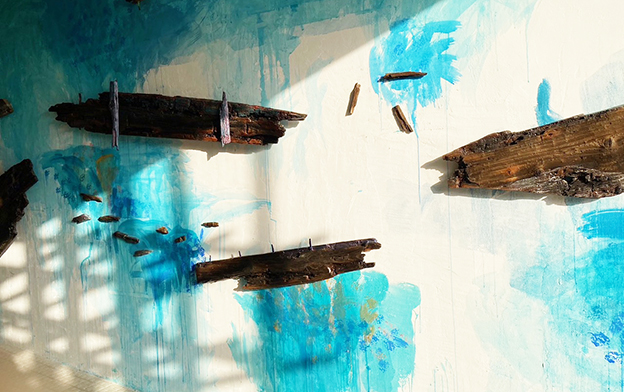
On March 12, "Boat Board Art" was completed on the wall of the passageway from the schoolyard to the courtyard of "Tadanoumi Shugakko," an exchange facility in Tadanoumi Futamado, Takehara City, Hiroshima Prefecture. The school is a community facility that promotes the use of personal computers and is used as a place to interact with the local community. It is sponsored by Ringrow Inc. It is a place where both senior and children can feel free to drop in and relax. It is a place where senior and children alike can casually drop by and relax.
The connection was made by Mr. Naoto Shinmoto, a local historian and folklore researcher and representative of the caretakers, who donated the old boat planks, We were able to create "boat-plank art" as part of the facility's renewal and renovation project.
Originally, my brother Tetsutaro Ogawa, a folklorist born in Hiroshima, used to go to this small port town to study fishermen in the Seto Inland Sea. Even after my brother passed away, I have visited this small port town with my nephews for fishing and island tours, guided by Mr. Shinmoto. I worked hard on the wall while feeling the sea breeze.
The installation of the boat board was made possible by Mr. Shinmoto, Mr. Yamazaki, a local architect, my nephew Kojiro Ogawa, members of the shugakko, and Mr. Yuji Harada of Harada Architects and Crafts, and students who participated in the workshop organized by Mr. Harada. Thank you all very much for your help!
Organized by Ringrow Co, Yuji Harada Architects & Crafts.
Tadanoumi shugakko https://tadanoumi.shugakko.jp
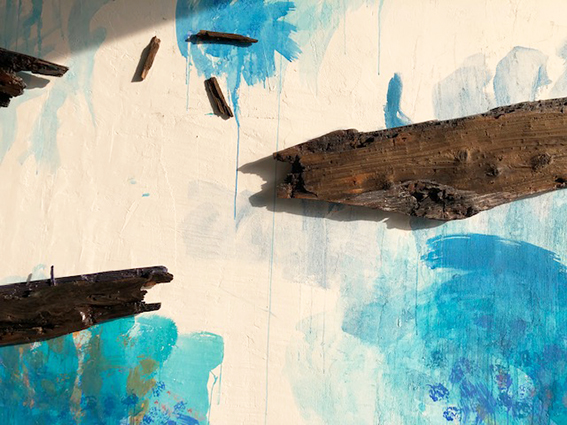

The boat planks were set up to look like fish swimming on the wall, which had been painted with turquoise and cobalt blue paints at the end of last year to create an image of the Setouchi Inland Sea. On the large wall (approx. 3m x 7m), I was able to paint comfortably and spontaneously. However, it was the result of a lot of trial and error, including many drawings, a one-tenth scale blueprint, and some maquettes on a reduced plaster wall, before reaching this point.
Memories inherent in the ship's hull...Once upon a time, the ship would have traveled back and forth across the Seto Inland Sea. Imagining the "memory of the boat and the shio," which must have sometimes sailed back and forth between the calm waves and sometimes through rough seas, spurred me on to finish the work. The title "Memory of the Tide" was chosen by my nephew Kojiro, a reporter from the Chugoku Shimbun, and others who were present during the finishing process. In my brother's posthumous book, "Crossing Borders and Resistance" (Shin Hyoron), it is written that fishermen fishing on the sea "by moving their boats while understanding the currents of the Shio. It seems that there is a special relationship between the tides and fishing.
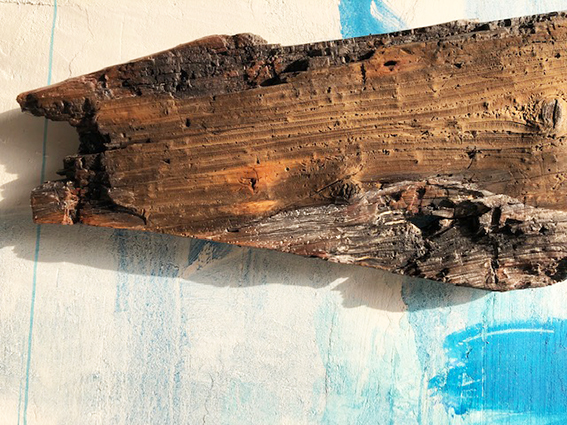
In order to bring out the outline of the atmospheric old wood that has weathered over the years, the grain of the ship's planks, which looked as if they were about to collapse, was hardened by applying several layers of transparent medium, paint, and gofun shell lime. Another feature of this work is that the surface is finished by using both glossy and matte mediums.
When Mr. Shinmoto first showed me the boat planks, which had been sitting in storage for a while after being used as wall material for a house, I was completely amazed. I wondered if it would be possible to create something out of these fragile, black planks. But when I looked at the cut surface with a electric saw, I realized that the wood inside was fresh strong and sturdy as shown in the photo below. I later found out that the black surface was a burnt charcoal. Later, I found out that the black surface was a technique to enhance the strength of the washune, which is carbonized by burning to produce a preservative effect,
I was amazed at the fact that the planks are still strong decades later, thanks to the wisdom of our ancestors.
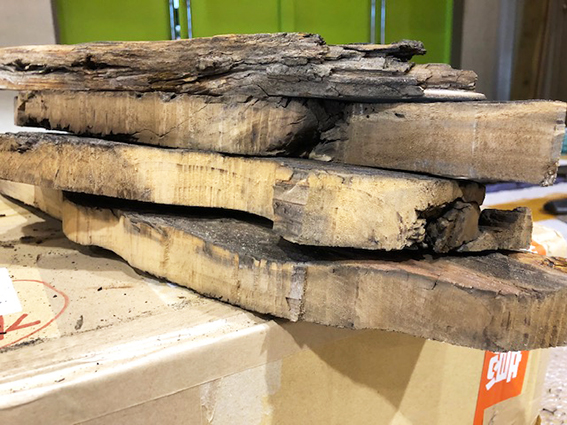
Cross section of a ship's board cut with an electric saw the preservative effect of the carbonization on the surface keeps the inside of the wood fresh and hard.
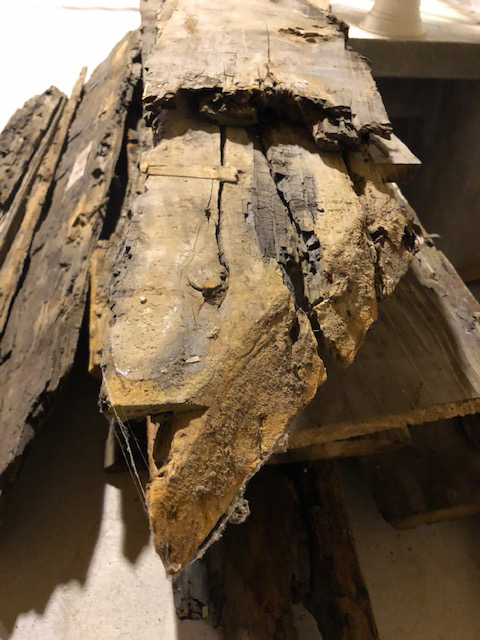
When I first saw the boat's planks in storage, they were dusty, sooty, and looked as if they were sleeping. However, I felt something attractive about it and asked Mr. Shinmoto to provide it to us. What was the attraction? What was the charm? I still wonder. It was used as a ship, crossed the sea, and protected houses as wall material, Or is it the texture of the carbonized sumi ink, which is produced by burning the surface until it carbonizes?
I washed them, dried them, applied medium and paint, and made them into swimming fish.
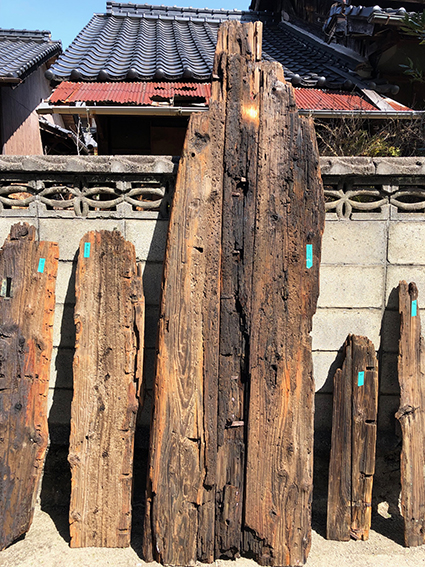
I washed them, dried them, applied medium and paint, and made them into swimming fish.
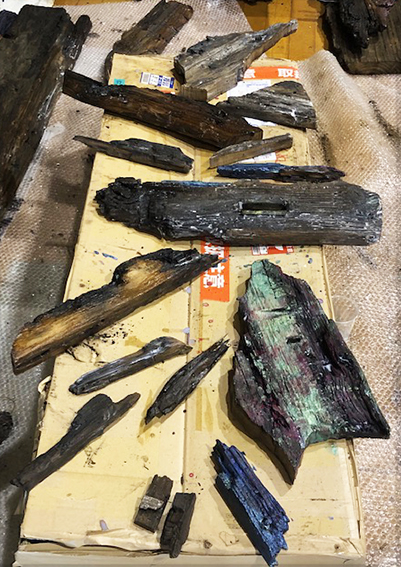
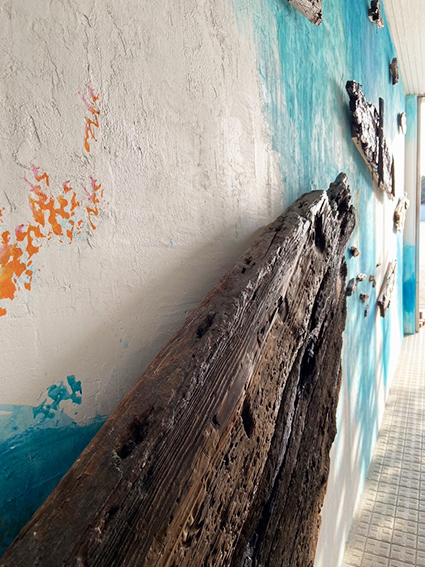
photo by Kojiro Ogawa
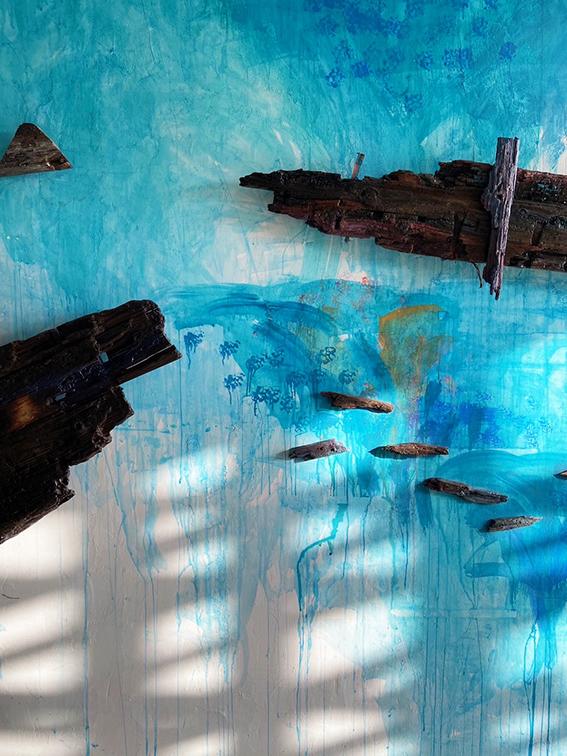
When light shines through the schoolyard, the shadows of the bamboo crafts set up across from it are projected onto the wall, increasing the shadows. I sincerely hope that when local residents stop by and look at it, it will become "boat board art" that stirs their imagination, expanding the image of the sea in their minds!
Border Crossing and Resistance
https://www.shinhyoron.co.jp/4-7948-0702-3.htm
The "Chugoku Shimbun" (Newspaper) reported on the exhibition plan below.
https://www.chugoku-np.co.jp/articles/-/281708
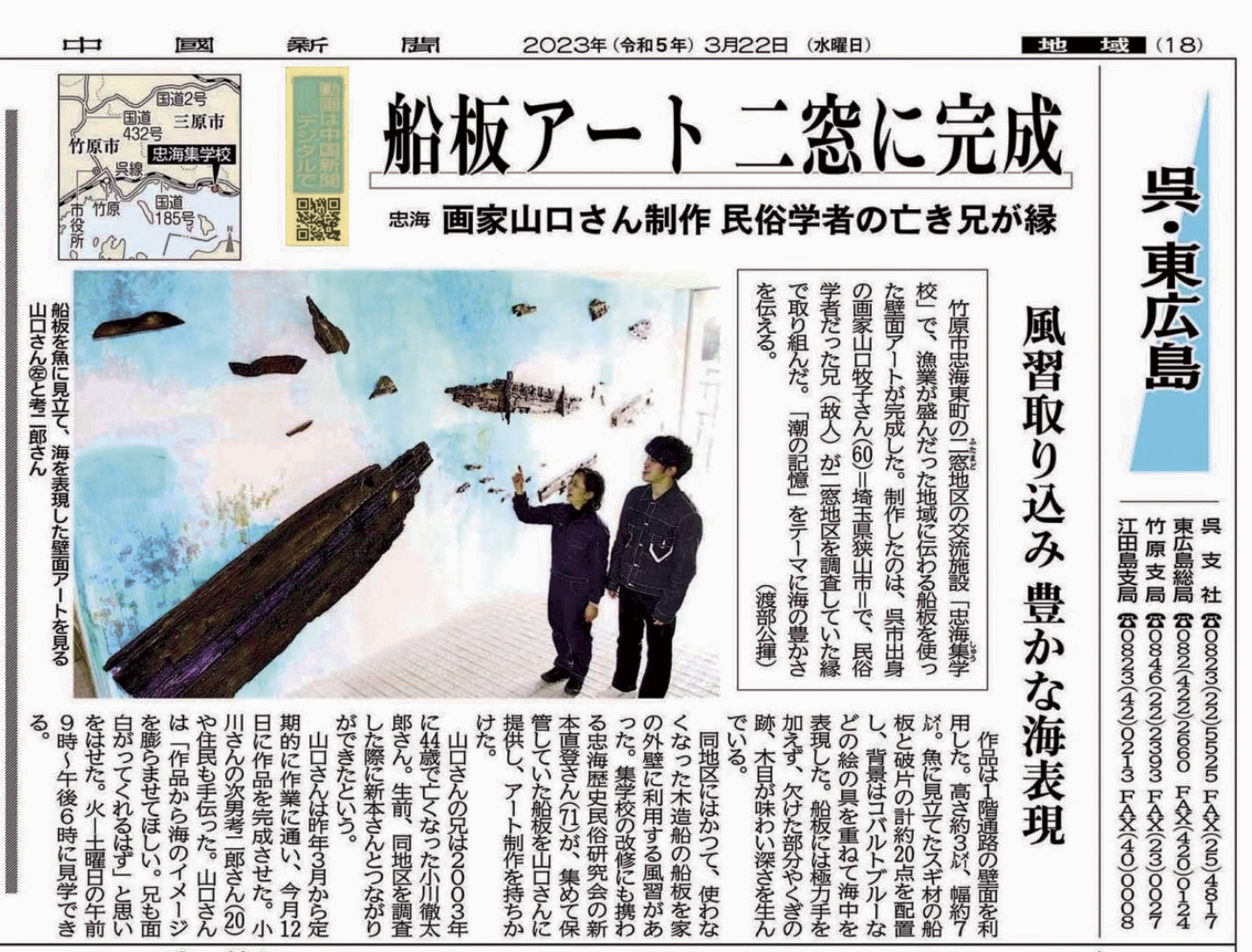
The Chugoku Shimbun(news paper), Kyodo News, Nikkei, Chubu Keizai Shimbun, Kobe Shimbun, and Mainichi Shimbun reported on the completion of this shipboard art. In addition, Mr. Masaki Watanabe, a reporter for the Chugoku Shimbun, created a digital version (youtube).
Tadanoumi Shugakko, an exchange facility in Takehara City, completed artwork on a shipboard with the theme "Memory of the boat and the shio," Produced by Chugoku Shimbun
Tadanoumi School + Workshop
Produced by Studio Yuji Harada
◼Ship's boad artwork no.1 Tadanoumi Shuugakko in Hiroshima